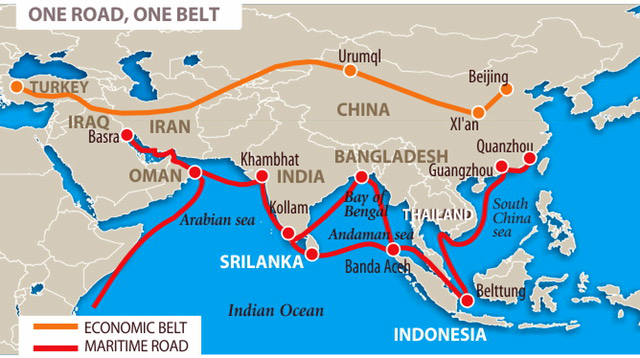The 2016 ruling of Permanent Court of Arbitration (PCA) did not dissuade China from conducting activities to demonstrate its military might in South China Sea (SCS), and its obvious disregard for rules-based international order. It dispatched a naval task group in the area in early 2017 consisting of an aircraft carrier and several surface and subsurface combatants for naval drills. A few months later, it launched the first Type 055 destroyer, a 10,000-ton warship designed and built in China, and further fortified its 3 bases in the disputed area that is far beyond its borders. It also challenged other nation’s military aircraft and ships that traversed SCS’s international waters and airspace as it insists ownership of areas within its nine-dash line, and unilaterally declared boundary limits.
China’s behavior is clearly an indication that it has a robust maritime strategy that is supported by the entire country –party, government, military, police and civilian. With the largest population and second largest economy worldwide, Chinese leaders fully recognize the necessity to expand its reach to ensure continuous supply of resources, and to establish dominance in international affairs. This expansion requires an integrated civilian-military command and control, and a streamlined armed forces. To link Asia to Europe and Africa, China’s Belt and Road Initiative with its maritime component –Maritime Silk Road– needs an integrated effort from all sectors of society.
The strategy aims to transform China into a great maritime nation in the near future. This calls for unhampered use of the maritime routes using its merchant fleet and seagoing force supported by attendant facilities, including bases, in selected littoral states. To expedite entry to those countries and generate positive international reaction, the strategy spells out two core elements: preservation of marine environment, and exploitation of ocean resources. Already, China gained foothold in many countries in Asia, Africa, and Europe through various projects including port development, offshore wind power generation, seawater desalination, seaside industrial park, railway, and special economic zone. It also established cooperative mechanisms for joint maritime and fishery law enforcement, counter-terrorism and anti-violence on sea. Further, it promoted training, exchanges, SAR, information sharing, marine disaster warning systems, and liaison networks with other countries to enhance capacities to confront maritime emergencies.
This whole-of-nation approach in dealing with maritime matters is best described by three (3) latest actions by China on SCS.
First, the protection of maritime rights and interests through policy and strategic issuances is now elevated to the Foreign Ministry level. Most of SCS has been placed under the administrative control of China’s Hainan province. This allows synchronization of activities from intelligence collection and analysis, research and elimination of negative impact of the 2016 PCA decision to coordinated responses to emergencies.
Second, the functions of State Oceanic Administration were split into two departments: national resources; and ecology and environment. This realignment of functions at department-level will support the core elements of the maritime strategy, marine environmental protection, and ocean resources management.
Third, China Coast Guard, which was under the State Oceanic Administration and organized only in 2013, will no longer report to dual authorities – civilian and military. It will now be under the control of the People’s Armed Police that reports to the Central Military Commission thereby effectively changing its status from civilian to military. This change of status will allow the Coast Guard to assume military tasks and have flexibility to act aggressively. The integration of the party, government, military and police is strengthened by the support of fishermen and maritime industry. The military pays the fishermen who are members of civilian militia to report presence of non-Chinese vessels in SCS and undertake actions that “shield” direct military participation. These include surrounding foreign warships, harassing fishermen from other countries and stealing sonar buoys of a foreign navy in water areas that the Chinese assumes ownership. The civilian militia serves as naval auxiliaries.
China’s maritime strategy has alerted several maritime nations including India, Japan, Australia and United States. The US very recently renamed its Pacific Command into Indo-Pacific Command to highlight the importance of the two oceans, Pacific and Indian, where half of world trade passes. Their individual actions may not be enough to counter China’s maritime objectives but collectively they can influence that country to adhere to international rules-based regime while achieving its strategic objective through diplomatic engagements. They may also consider improving maritime domain awareness, sharing protocol, and forming a multinational maritime force to protect freedom of navigation, if other alternatives become untenable.
With regard to the other claimant countries, they should carefully study the implications of the change of status of the China Coast Guard including the effect on their defense strategy and capability acquisition plans and programs. The PLA Navy with its formidable capabilities may delegate its responsibility in SCS to its Coast Guard and focus its missions in other water areas to protect the Maritime Silk Road. So far, China’s maritime strategy appears to have gained considerable headway in the past few years. This must have been achieved by consolidation –not dispersion– of power and resources in the party, government, military and police, with the support of the civilian population.
